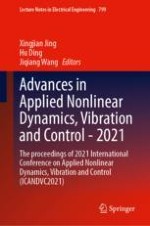This book is to provide readers with up-to-date advances in applied and interdisciplinary engineering science and technologies related to nonlinear dynamics, vibration, control, robotics, and their engineering applications, developed in the most recent years. All the contributed chapters come from active scholars in the area, which cover advanced theory & methods, innovative technologies, benchmark experimental validations and engineering practices. Readers would benefit from this state-of-the-art collection of applied nonlinear dynamics, in-depth vibration engineering theory, cutting-edge control methods and technologies, and definitely find stimulating ideas for their on-going R&D work. This book is intended for graduate students, research staff and scholars in academics, and also provides useful hand-up guidance for professional and engineers in practical engineering missions.
